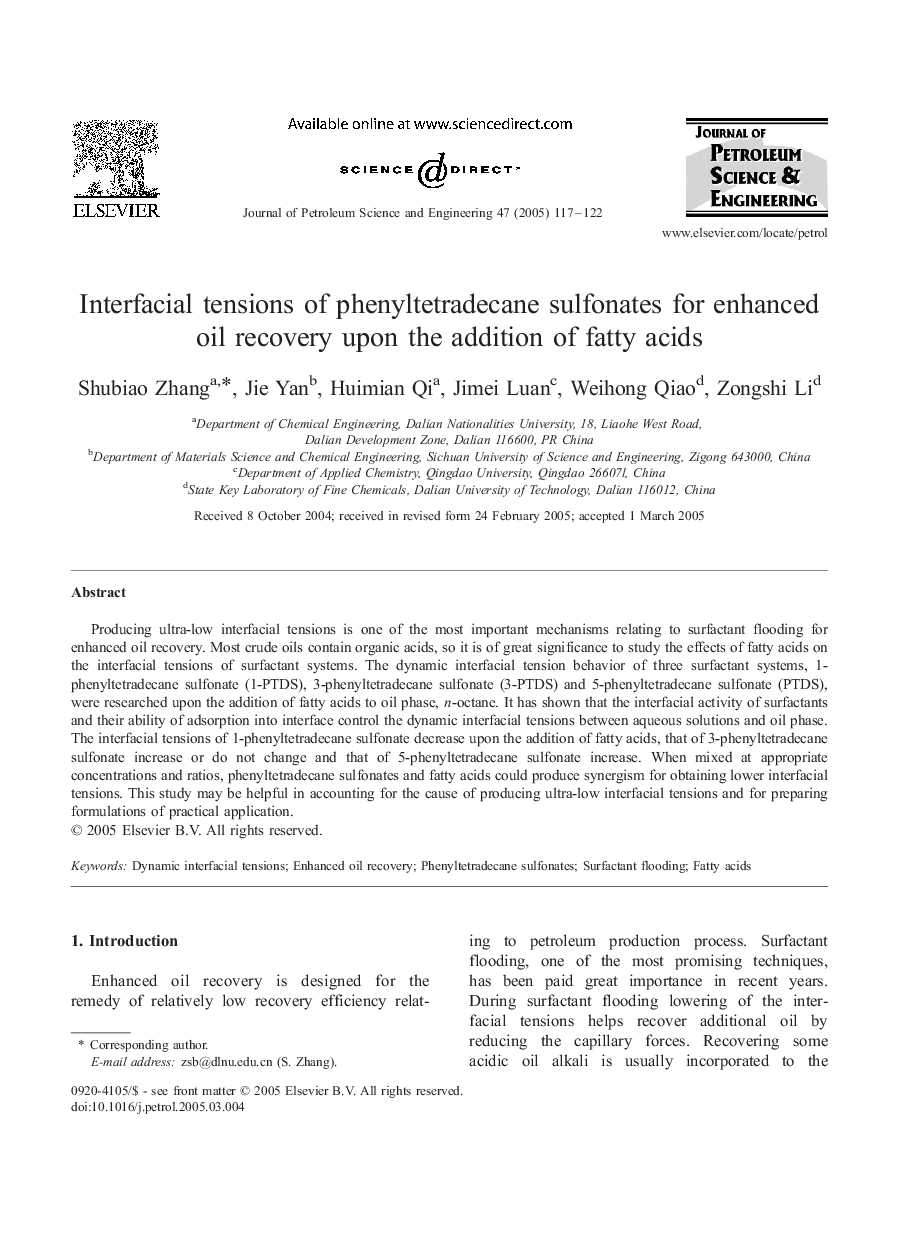| Article ID | Journal | Published Year | Pages | File Type |
|---|---|---|---|---|
| 9826557 | Journal of Petroleum Science and Engineering | 2005 | 6 Pages |
Abstract
Producing ultra-low interfacial tensions is one of the most important mechanisms relating to surfactant flooding for enhanced oil recovery. Most crude oils contain organic acids, so it is of great significance to study the effects of fatty acids on the interfacial tensions of surfactant systems. The dynamic interfacial tension behavior of three surfactant systems, 1-phenyltetradecane sulfonate (1-PTDS), 3-phenyltetradecane sulfonate (3-PTDS) and 5-phenyltetradecane sulfonate (PTDS), were researched upon the addition of fatty acids to oil phase, n-octane. It has shown that the interfacial activity of surfactants and their ability of adsorption into interface control the dynamic interfacial tensions between aqueous solutions and oil phase. The interfacial tensions of 1-phenyltetradecane sulfonate decrease upon the addition of fatty acids, that of 3-phenyltetradecane sulfonate increase or do not change and that of 5-phenyltetradecane sulfonate increase. When mixed at appropriate concentrations and ratios, phenyltetradecane sulfonates and fatty acids could produce synergism for obtaining lower interfacial tensions. This study may be helpful in accounting for the cause of producing ultra-low interfacial tensions and for preparing formulations of practical application.
Related Topics
Physical Sciences and Engineering
Earth and Planetary Sciences
Economic Geology
Authors
Shubiao Zhang, Jie Yan, Huimian Qi, Jimei Luan, Weihong Qiao, Zongshi Li,
